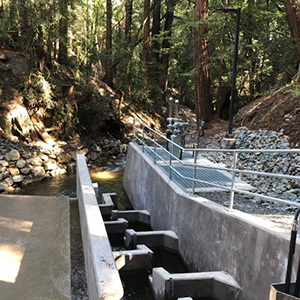Governor Brown’s Executive Order B-36-15, issued November 13, 2015, stated that if drought conditions persist through January 2016, the current emergency restrictions on reducing urban potable water use will be extended to October 31, 2016. The executive order prompted the State Water Resources Control Board (SWRCB) to solicit public input on several occasions via workshops and public comment letters in December and January. Most recent was a wave of letters from more than 100 interested parties on January 28, 2016, including the California Water Association (CWA).
In its comment letter, CWA cautioned against instituting permanent actions mandating water-use reductions that will not be necessary once drought conditions cease. CWA also requested the SWRCB to take the following actions in the final version of its extended Emergency Regulation:
- Revisit the mandated percentage reduction in total potable water production in April 2016;
- Eliminate the cap on credits or adjustments to the conservation standards for urban water suppliers; and
- Clarify and expand the credits for water supply investments.
With respect to adjustments in individual water utility conservation standards, CWA, along with numerous other parties, strongly urged the SWRCB to revisit the extended Emergency Regulation in April 2016 after evaluating the final snowpack report, reservoir capacity and aquifer levels. CWA said, “If 2016 is an above-average year for precipitation and snowpack, however, it is unrealistic to expect that the public will remain committed to this extreme level of conservation, given the sacrifices necessary to achieve it.”
CWA recommended that the SWRCB incorporate a simple formula into any extended Emergency Regulation for adjusting the mandated percentage reduction in total potable water production. To the extent the final snowpack report in April 2016 reflects amelioration of drought conditions affecting California, the conservation standard for each urban water supplier should be reduced by an equal proportion calculated as follows: an amount approximately equal to the weighted average proportion by which the deficiency in the state’s snowpack as compared with an average year and the deficiency in the principal state reservoirs as compared with an average year have improved in comparison to those deficiencies as of April 2015.
CWA also opposed adoption of a SWRCB staff recommendation to cap all credits and adjustments to water suppliers’ conservation standards. CWA believes water suppliers meeting the climate adjustment standard, experiencing growth or having invested in drought-resilient water supply projects should receive full credits or adjustments. CWA also noted that the cap would create a disincentive to invest in drought-resilient water supplies.
Finally, CWA suggested water suppliers should receive credit for investing in all indirect potable reuse, not just coastal wastewater, and that the credit should be based on the percentage of indirect potable reuse water within the water suppliers’ overall potable water supply. CWA believes suppliers that have made investments to meet a large portion of irrigation demand with non-potable recycled water will not have the same ability to meet water-use reduction targets as those not making similar efforts (and therefore should get credit for these recycled water investments). CWA also believes that remediation of polluted groundwater sources should be included in the credit program because these investments contribute to existing surface and groundwater supplies.
CWA’s letter pointed out that the Emergency Regulation should provide credits for drought-resistant water supplies developed “prior” to 2013 rather than “since” 2013, as staff recommended, to reward the efforts of water suppliers that made investments during previous periods of drought, not just the current drought.
On February 2, 2016, the SWRCB adopted the Proposed Framework, and the Office of Administrative Law approved the Extended Emergency Regulation on February 11, 2016. CWA was pleased to note that the SWRCB will, indeed, revisit the Emergency Regulation and the revised conservation standards in April 2016, and that while the SWRCB did not eliminate the cap on potential revisions to a supplier’s individual target, it did expand the cap to eight percentage points rather than four. CWA will continue to pursue additional recommended revisions to the Emergency Regulation in April.





